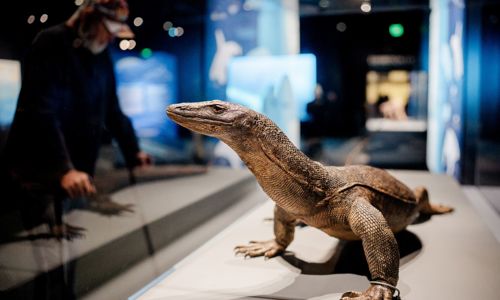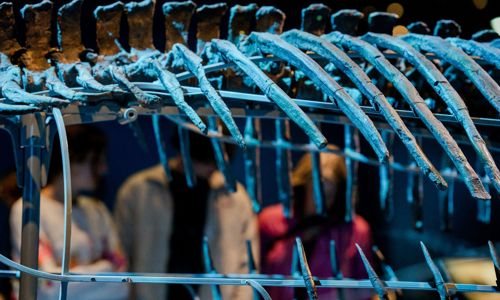Closes: Sept. 7
“Jurassic Oceans: Monsters of the Deep” takes you back in time to experience a prehistoric underwater world as you’ve never seen before. When dinosaurs ruled the land, the oceans teemed with equally fascinating and fearsome creatures. Explore the astonishing life of ancient seas, from the mighty Jurassic plesiosaur to the colossal megalodon that lived millions of years later, and uncover the captivating story of their evolution and ecosystems. Striking fossil specimens, including fully articulated 3D models and life-size casts, show ferocious predators and unusual prey in their natural habitats and tell the story of how they adapted to survive. Plus, this bilingual English and Spanish exhibition is filled with exciting hands-on activities that invite the imagination to swim wild!

"Jurassic Oceans: Monsters of the Deep" is sponsored in Denver by The Denver Foundation.

Exhibition Walkthrough

Dive into the Jurassic
Step back between 150 and 200 million years to the Jurassic Period, when dinosaurs ruled the land, pterosaurs soared the skies and marine reptiles dominated the oceans.

Ancient Jaws
By interacting with both original fossils and casts in the “Ancient Jaws” section, guests can explore the 400-million-year history of sharks.

Something Fishy in the Water
The “Something Fishy in the Water” section takes a closer look at the diverse marine life of the Jurassic period and their adaptations for survival. In the nutrient-rich waters, fish thrived, with some growing to enormous sizes.

Reign of the Reptiles
In the “Reign of the Reptiles” section, the stars of the show are the plesiosaurs! But guests also discover more about ichthyosaurs, Liopleurodon, crocodiles, turtles and other marine reptiles.

T-Rex of the Sea
The next section, “T. Rex of the Sea,” features over 30 different species of mosasaurs. These mosasaurs were the main predators during the Cretaceous, with some having sharp teeth adapted to catching and holding onto scaly fish, while others had especially hard teeth to crush the shells of ammonites.

Marine Reptiles Today
“Marine Reptiles Today” showcases the modern descendants of ancient marine reptiles. Approximately 66 million years ago, an asteroid hit the Earth, leading to the extinction of 75% of all animals, including most marine reptiles. While less diverse today, species like the leatherback turtle, saltwater crocodile, marine iguana, monitor lizard and the sea snake continue to thrive in today’s oceans.

Today’s Ocean Giants
The final section, “Today's Ocean Giants,” highlights the evolution of marine mammals, which are now the ocean's top predators.

